This article shares an example of an artificial intelligence product that was built and profitable within 48 hours using no-code tools. This case started by solving the pain points of podcast host guest research, quickly developed an AI research assistant, and acquired paying users in a short period of time, verifying the feasibility of its business model. The article details the entire process from market research, product design, development to promotion, and summarizes lessons learned and tools used to provide reference for entrepreneurs who want to quickly verify business ideas and achieve profitability.
This case study shares how to build a profitable artificial intelligence product from scratch using no-code tools in 48 hours. The developers identified a pain point that needed to be solved: podcast hosts had a series of access requirements for guests, and developed an AI research assistant case to serve podcast hosts.
The product developed in 48 hours quickly gained two paying customers, one for the $29 plan and the other for the $300 annual plan, for a total of $329. Although far from profit targets, this project demonstrates how focusing on solving a real problem and validating it early can lead to a viable product being developed quickly and efficiently.
It is suitable for entrepreneurs who are interested in AI technology and no-code development and want to quickly verify their business ideas and achieve profitability.
medium. Requires the ability to quickly learn new technologies and adapt to new tools, as well as basic business thinking and market validation strategies.
Market research and creative conception
Use Google Trends to analyze search trends and identify potential technology or market directions.
Make a list of possible business ideas using a combination of personal experience and Chat GPT.
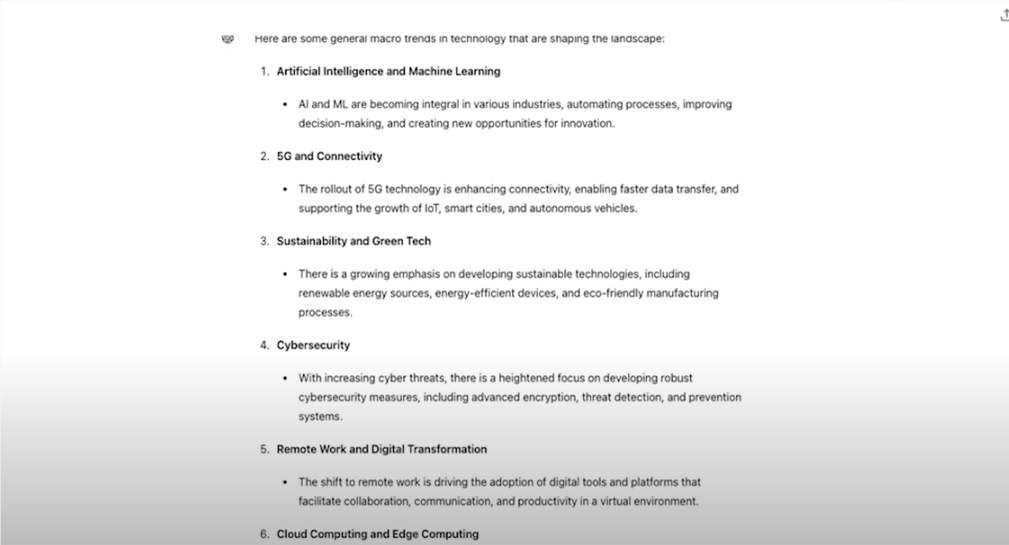
Identify target customers and problems
Identify your target customer groups, such as podcast hosts, and determine the problems they face, such as the tedious task of guest research.
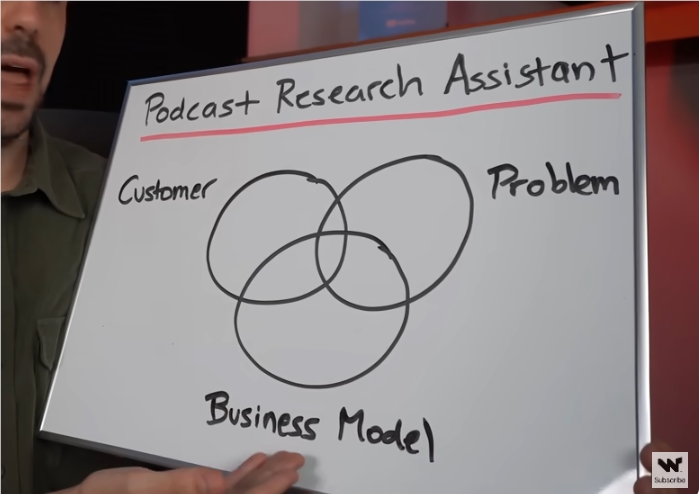
Going to text some podcasters I know to find out if they actually have this problem.
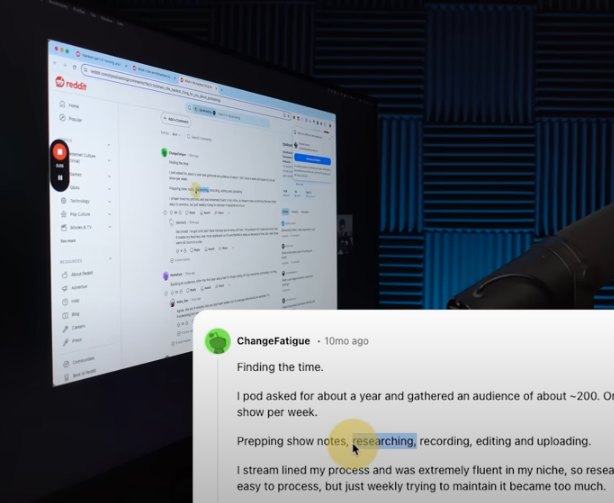
Ideate solutions
Designing a concept for an AI research assistant aimed at simplifying the preparation of podcast hosts.
business model design
Identify a free trial plus monthly subscription business model to attract users and achieve profitability.
Quick market validation
Quickly collect feedback and validate market demand by sending messages to known podcast hosts.
Brand naming and domain name checking
Think creatively about brand names, such as "Outerview," and check domain name availability.
AI assisted logo design
Design a brand logo using Fiverr’s AI logo generator.
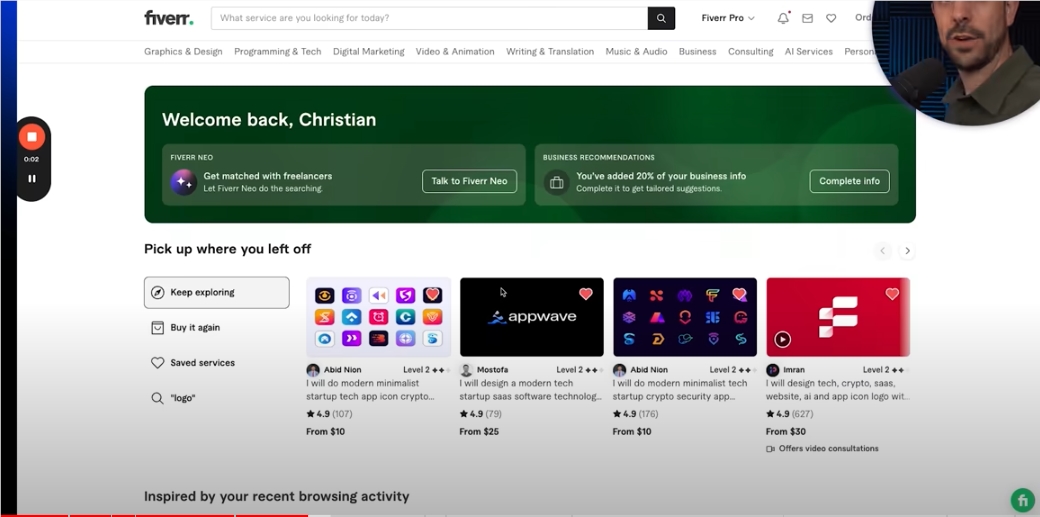
Color scheme and image selection
Use the Color Scheme Generator to determine the color scheme and Unsplash to select the appropriate image.
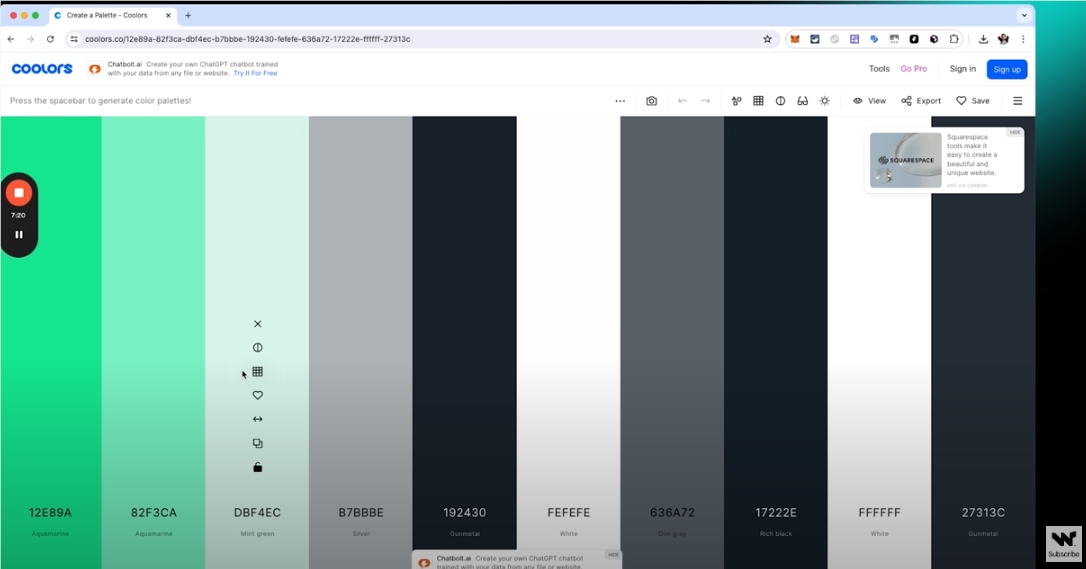
Build a landing page
Use Softr to build a concise and attractive landing page with clear product value and CTAs.
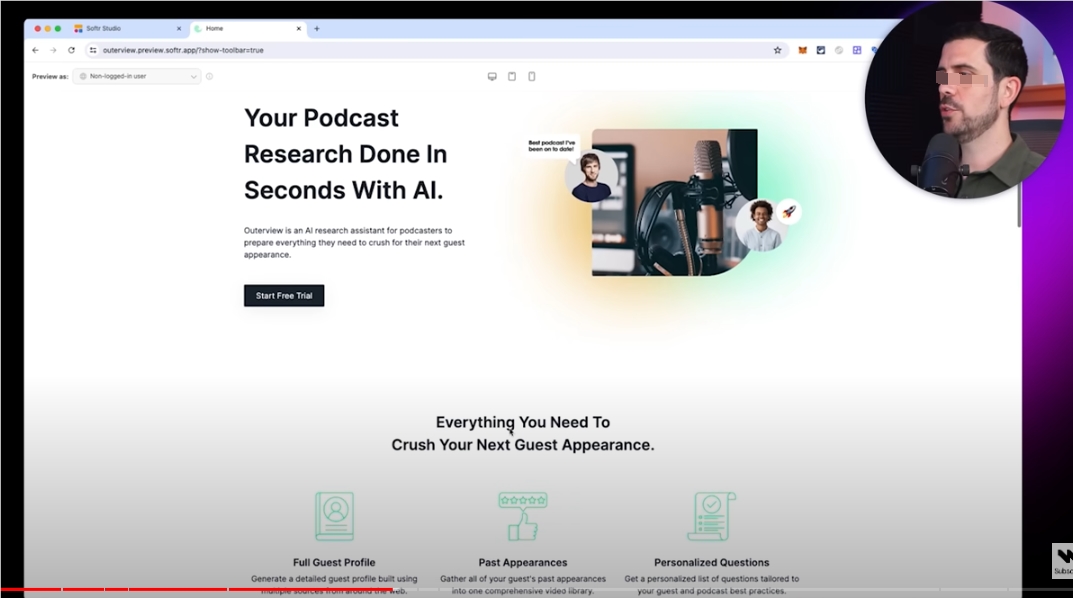
Choose the right tools and platforms
Choose Make as the no-code automation platform, Airtable as the database, and Softr for user experience design.
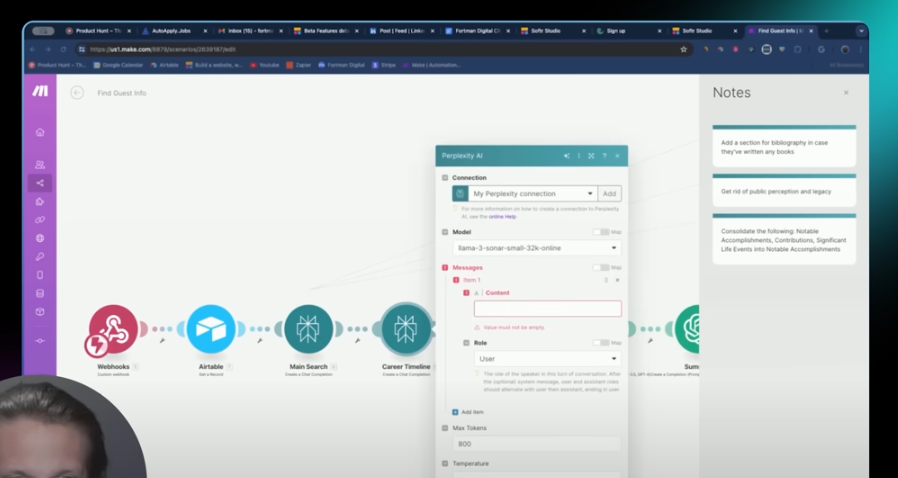
Build application backend
Use Make to connect different tools and APIs, such as Perplexity API and Chat GPT, to achieve data collection and processing.
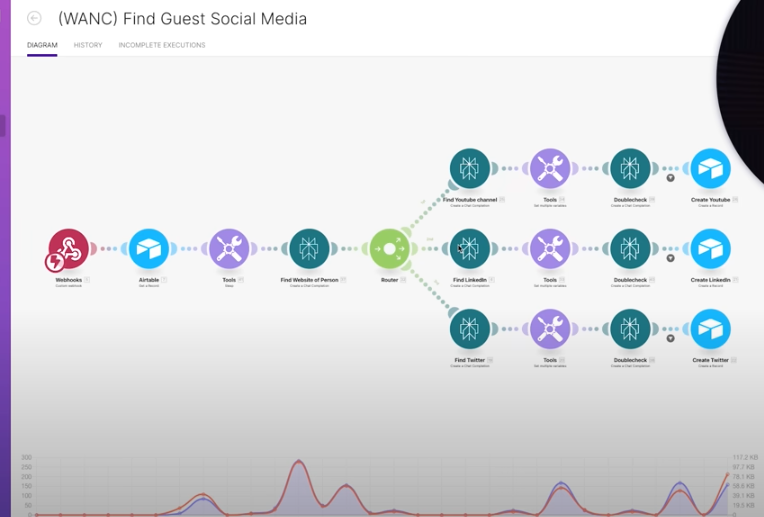
Develop MVP (minimum viable product)
Determine and develop key functions of MVP, such as guest information collection, personalized question generation, etc.
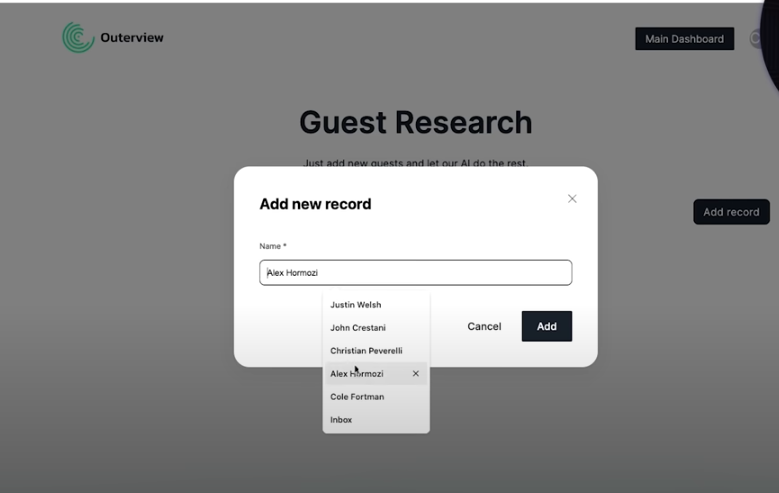
User experience optimization
Adjust the interface design and user flow in Softr to ensure ease of use for users.
Application testing
Test the app to make sure all features are working properly and fix any issues found.
customer acquisition strategy
Contact potential customers and promote products through social platforms such as LinkedIn.

Sales and Customer Feedback
Communicate with potential customers, obtain sales, and collect customer feedback for product improvements.
cost benefit analysis
Record all costs, including tool subscriptions, logo design, etc., to ensure that the project is profitable.
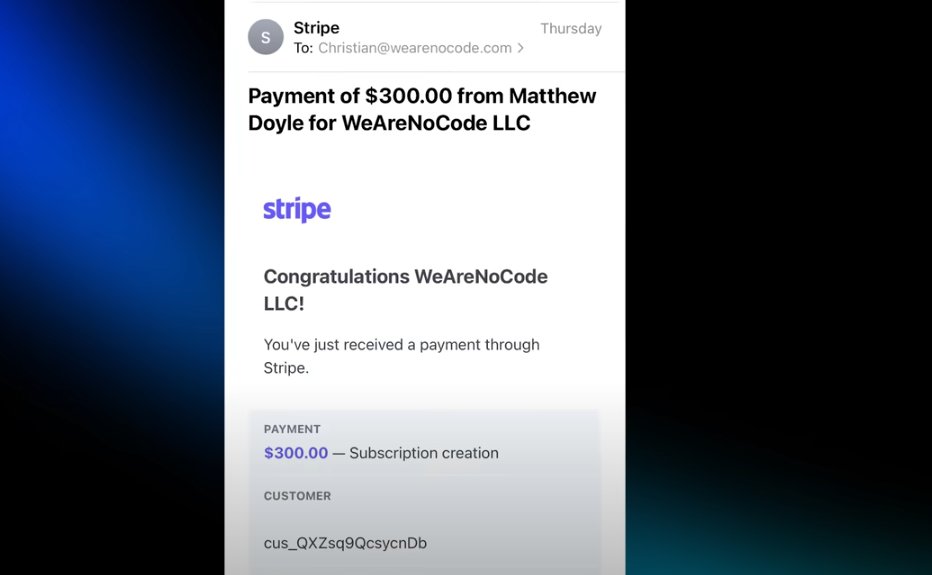
Continuous iteration and optimization
Continuously iterate and optimize products based on customer feedback and market changes.
This case shows how to quickly build and launch an AI application from scratch under extreme time constraints. The entrepreneurs in the case finally achieved initial profits by effectively utilizing existing tools and platforms, verifying market demand, and rapidly iterating products. However, the cases also reflect the challenges of product development under tight deadlines, including avoiding perfectionism pitfalls and ensuring cost-effectiveness.
All in all, this case successfully demonstrated the feasibility of using no-code tools to quickly build and verify AI product business models. It provides entrepreneurs with valuable experience and actionable steps, and also emphasizes the importance of rapid iteration and customer feedback. I hope this case can inspire more people to explore entrepreneurial opportunities in the AI field.